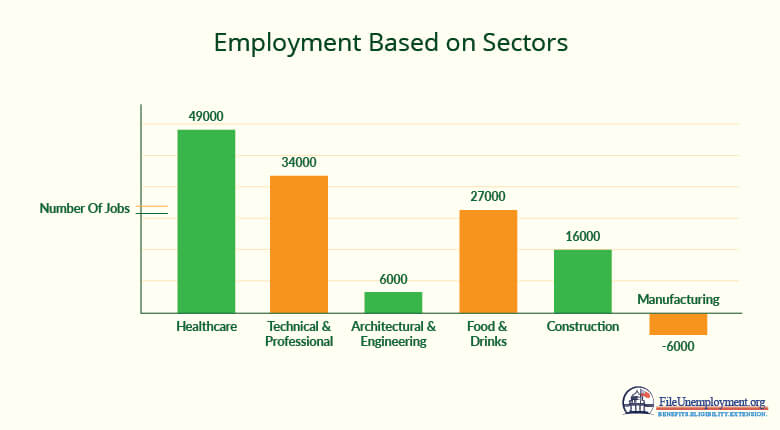In March, the total non-farm payroll increased by 196,000 while the unemployment rate remained unchanged at 3.8 percent. The major gainers were in the field of health care and people employed in technical and professional services.
Household Survey Data
While the unemployment rate remains unchanged at 3.8 percent, the number of people unemployed was 6.2 million.
The major work groups include:
- Adult Men – 3.6 percent
- Adult Women – 3.3 percent
- Teenagers – 12.8 percent
- Whites – 3.4 percent
- Blacks – 6.7 percent
- Asians – 3.1 percent
- Hispanics – 4.7 percent
1.3 million of the population are jobless for 27 weeks or more and this accounts for 21.1 percent of the unemployed. At 63 percent, the labor force participation rate was little changed over the past 12 months. The employment-population ratio was 60.6 percent in March and has been either 60.6 percent or 60.7 percent since October 2018.
Part time employed people was little changed at 4.5 million in March. These individuals would have preferred full-time employment were working part time because their hours were reduced or there were no more full-time jobs.
1.4 million people were attached to the labor force which is slightly different from a year earlier. These individuals were not part of the labor force, were ready to work and have looked for jobs for the last 12 months.
In March, there were 412,000 discouraged workers in March which remained unchanged from a year earlier. Discouraged workers are people that are not looking for work as they believe that there are no jobs in the market for them. While the remaining 944,000 people marginally attached to the labor force had not searched for work for reasons like family responsibilities and school attendance.
Establishment Survey Data
As discussed earlier, the total non-farm payroll employment increased by 196,000 in March. It saw notable gains in health care and in technical and professional services. The employment growth averaged 180,000 per month during the first quarter of 2019 as compared to 223,000 per month in 2018.
The Health Care industry added 49,000 jobs in March and 398,000 over the last 12 months. In March, the employment in ambulatory health care services increased by 27,000, hospitals by 14,000 and nursing and residential care facilities by 9,000.
Technical and professional employment grew by 34,000 in the month of March and 311,000 over the past 12 months. At the same time, computer systems design and related services added 12,000 jobs. While architectural and engineering jobs increased by 6,000 and technical and management jobs increased by 6,000.
The employment in drinking places and food services had an upward trend of 27,000 with an average monthly again over 12 months. Construction employment showed little change in March to 16,000 but increased by 246,000 over the past 12 months.
Manufacturing employment decreased by 6,000 in March following an increase of 1,000 in February. In the 12 months prior to February, manufacturing had added an average of 22,000 jobs every month. But in the motor vehicle and parts industry, it declined by 6,000 in March.
There are major industries which include mining, retail and wholesale trade, warehousing, transportation, financial activities, government and information sectors which showed a small change over the month.
The average workweek for employees on private non-farm payrolls increased by 0.1 hour to 34.5 hours in March. The manufacturing workweek remained unchanged at 40.7 hours and the production and non supervisory employees increased by 0.1 hour to 33.7 hours.
In the month of March, the average hourly earnings on private non-farm payrolls rose by 4 cents to $27.7 and increased 3.2 percent in the last 12 months. Similarly, the average hourly earnings increased by 3.2 percent and the average earnings of the private sector production and non supervisory employees increased by 6 cents to $23.24 in March.
Revised Data
The total change in non-farm payroll employment from January was revised up from 311,000 to 312,000 and the change in February was revised from 20,000 to 33,000. Based on these revisions, employment gains in January and February were 14,000 more. After revisions, job gains average 180,000 per month over the last 3 months.
